CATEGORIES
Categories
Latest Stories
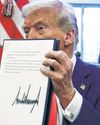
Flurry of Orders Vexes Trump Opponents
Legal challenges haven't stalled many efforts after aides rewrote playbook
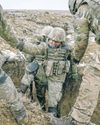
Trump's Embrace of Russia Tests NATO
Doubts are forming about the alliance as president criticizes Ukraine and the EU
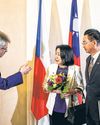
Small Adversaries of Russia and China Join Forces in Bid to Withstand Big Rivals
In an era of brutal great-power politics, how do lesser powers get by? For this embattled Pacific island, a lifeline comes from landlocked Slavs half a world away.

Apple's 'Cheap' iPhone Costs A Lot More Now
The iPhone 16e has big battery gains—but no more home button and a substantial price jump
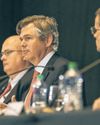
Lobbyist Mired in Hacking Scandal
A Washington, D.C., strategist and lobbyist with deep connections to the Republican Party, Justin Peterson is accustomed to fighting aggressively on behalf of powerful clients such as Exxon Mobil.
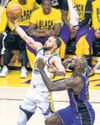
The 2 Trades in 5 Days That Lifted NBA's Biggest Rivalry
Not long ago, it seemed that the days when LeBron James and Stephen Curry ran the NBA were over.
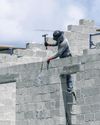
Are Homes Values About to Fall? It Depends
The supply of houses for sale is recovering much faster in some parts of the country than in others
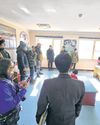
North Korea Is Open.Who's Going?
The first Western tourists are trickling back into the totalitarian Kim Jong Un regime

Parade Shooting Suspect Pleads Guilty
The man accused of a shooting spree that left seven people dead at a 2022 Fourth of July parade in a Chicago suburb pleaded guilty moments before lawyers were set to begin opening arguments in his trial.
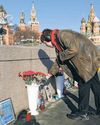
Moscow Muzzles What Little Is Left Of the Opposition
For years, mourners and members of Russia's pro-democracy movement have flocked to a bridge near the Kremlin each February to remember Boris Nemtsov, an opposition politician who was shot dead there in 2015.
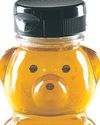
Private-Equity Firm Buys Dutch Gold Honey
Private-equity firm New Water Capital is acquiring Dutch Gold Honey and related businesses from the Gamber family that founded the company nearly 80 years ago.
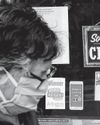
America Still Needs a Covid Reckoning
Why does nobody want to talk about the most tragic breakdown of leadership and ethics in our lifetimes?

Tips on Buying Inflation Protection
Yields on Treasury inflation-protected securities have approached their highest levels of the past two decades

A Border-Crossing Car Part Sees U.S., Canada and Mexico
The U.S. economy has never been more integrated with Canada and Mexico.
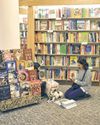
Shift From Paperbacks Is a Blow to Authors
Readers who don't want to spend $30 for a new hardcover nonfiction book can no longer count on the release of a lower-cost paperback edition.

'Hustling Expert' Behind Argentina Crypto Scandal
He is a college dropout who hawked energy drinks as a teen and sold Oreos to make rent. Under \"skills\" on LinkedIn, he listed \"hustling expert.\"
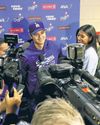
Striking Out With ESPN, MLB Plots a New TV Model
The baseball economy is a whole new ball game following departure of giant sports network

U.S. Chip Producer To Cut 2,000 Jobs
Embattled Microchip Technology expects annual savings of up to $100 million
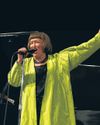
An Autobiography in Jazz
The nonagenarian singer Sheila Jordan deploys her soulful scatting on a new album
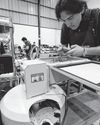
TSMC Plans to Invest $100 Billion More In U.S. Chip Factories
Taiwan Semiconductor Manufacturing Co. plans to invest at least $100 billion more in chip-manufacturing plants in the U.S. over the next several years under a plan announced Monday by the company and President Trump.
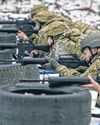
U.S. Halts Arms for Ukraine In Sharp Turn Away From Ally
The U.S. will pause all military aid to Kyiv until President Trump determines that President Volodymyr Zelensky of Ukraine is making a good-faith effort toward peace negotiations with Russia, the White House said.
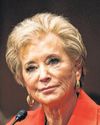
McMahon Confirmed as Education Secretary
Linda McMahon will be the country's next secretary of education and, if President Trump has his way, the last.
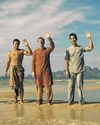
'White Lotus' Feeds Our Wellness Obsession
'There's so much of the client that you take on as a masseuse emotionally.'

Bid to Strip Soda From Food Aid Bubbles Up
RFK Jr. and allies push to prevent use of SNAP benefits to buy sugary drinks
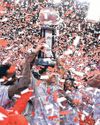
The Rowdy Rebirth Of Rick Pitino
The peripatetic 72-year-old coach keeps reviving his reputation in the Big Apple. The NCAA tournament beckons for St. John's.

I Wasn't Fired for 'Inadequate Performance'
In \"Trump Layoffs Hit Probationary Workers\" (U.S. News, Feb. 14), U.S. Office of Personnel Management officials are reported to have directed federal agencies to focus on \"low-performing\" newly hired federal workers.

Ian Frazier on George W. S. Trow's "Eclectic, Reminiscent, Amused, Fickle, Perverse"
George William Swift Trow, Jr.,'s G name fit his quickness of wit and spirit, and his grace.
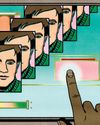
DEATH BECOMES HIM
“Mickey 17.”
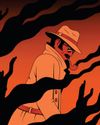
L.A. CONFLAGRATIONAL
The classic mystery that prefigured the latest wildfires.
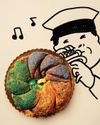
CROWN JEWEL
A golden age for the New Orleans king cake.
